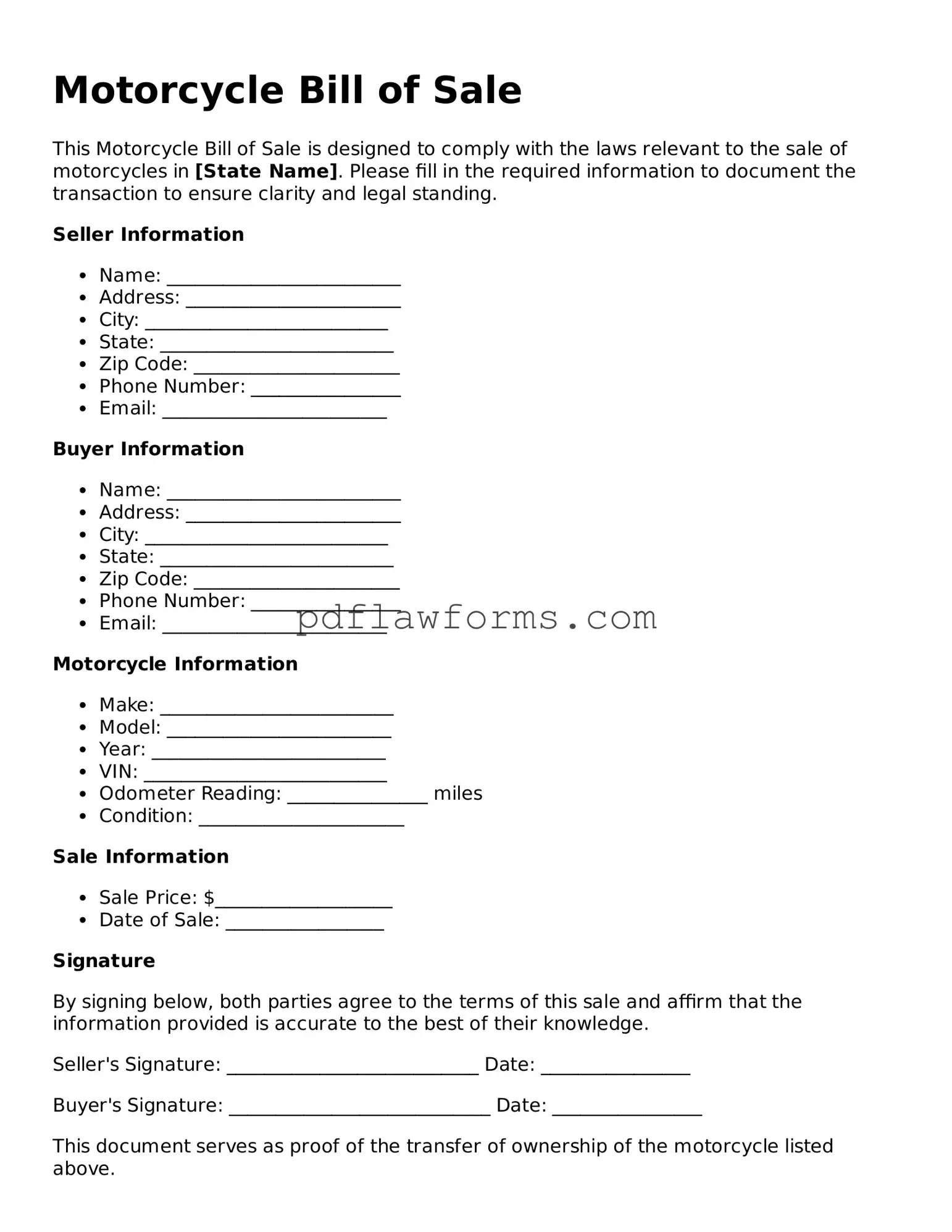Filling out a Motorcycle Bill of Sale form might seem straightforward, but many people make common mistakes that can lead to complications later. One frequent error is not including all necessary information about the motorcycle. This includes the make, model, year, and Vehicle Identification Number (VIN). Omitting these details can create confusion and may even affect the legality of the sale.
Another mistake is failing to accurately state the sale price. The price should reflect what the buyer and seller agreed upon. If the price is left blank or is inconsistent with other documents, it could raise red flags during registration or future transactions.
People often overlook the importance of signatures. Both the buyer and the seller must sign the document for it to be valid. Without these signatures, the bill of sale may not hold up in court or during a dispute.
Dates are crucial in any transaction, yet many forget to include them. Not specifying the date of the sale can lead to issues with ownership transfer and registration. A clear date helps establish when the transaction occurred, which is essential for legal purposes.
Some individuals mistakenly assume that a bill of sale is only necessary for high-value transactions. This is not true. A bill of sale is important for any motorcycle sale, regardless of price. It serves as proof of ownership and protects both parties involved.
Another common oversight is neglecting to provide the buyer's information. Full names, addresses, and contact details should be included to ensure that the transaction is traceable. This information can be vital if any issues arise after the sale.
People sometimes forget to mention any liens or loans against the motorcycle. If the motorcycle is not fully paid off, the seller must disclose this to the buyer. Failure to do so can lead to legal repercussions and financial liability for the seller.
Additionally, many do not check for any state-specific requirements. Each state may have different rules regarding what needs to be included in a bill of sale. It's essential to familiarize oneself with local laws to avoid future complications.
Finally, failing to keep a copy of the completed bill of sale can be a significant mistake. Both the buyer and seller should retain copies for their records. This documentation can be crucial for future reference, especially if any disputes arise.
